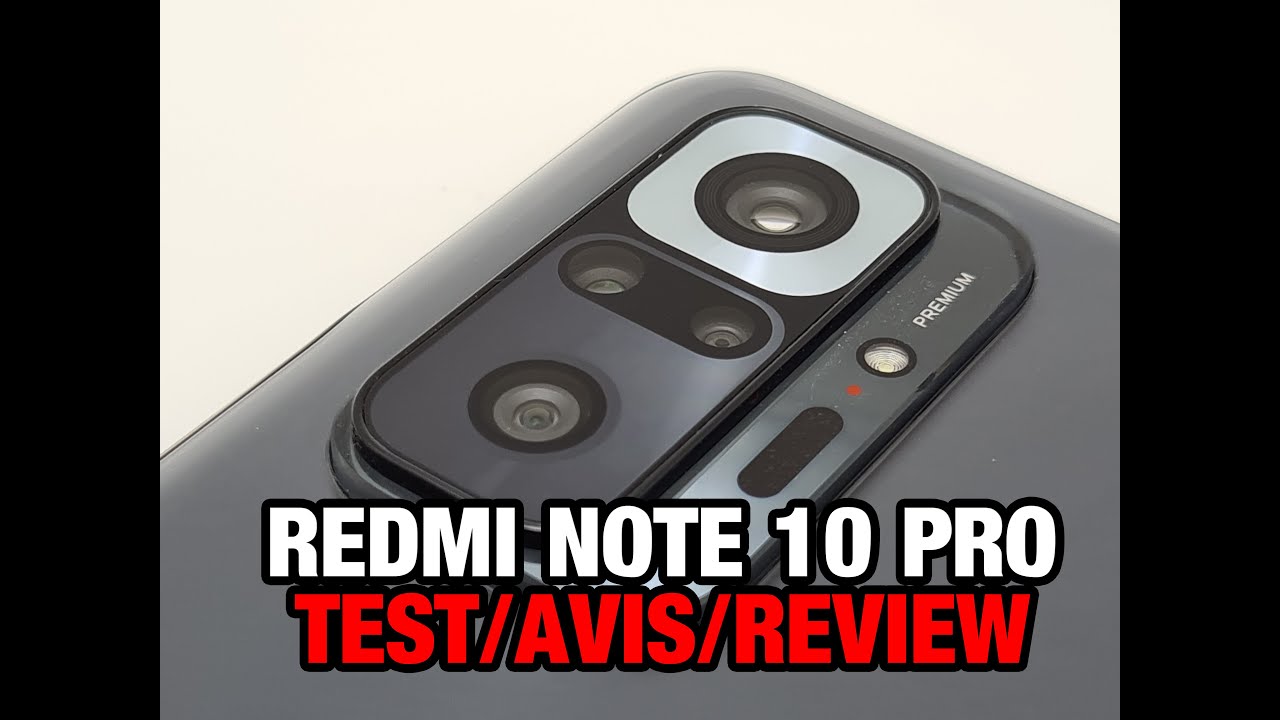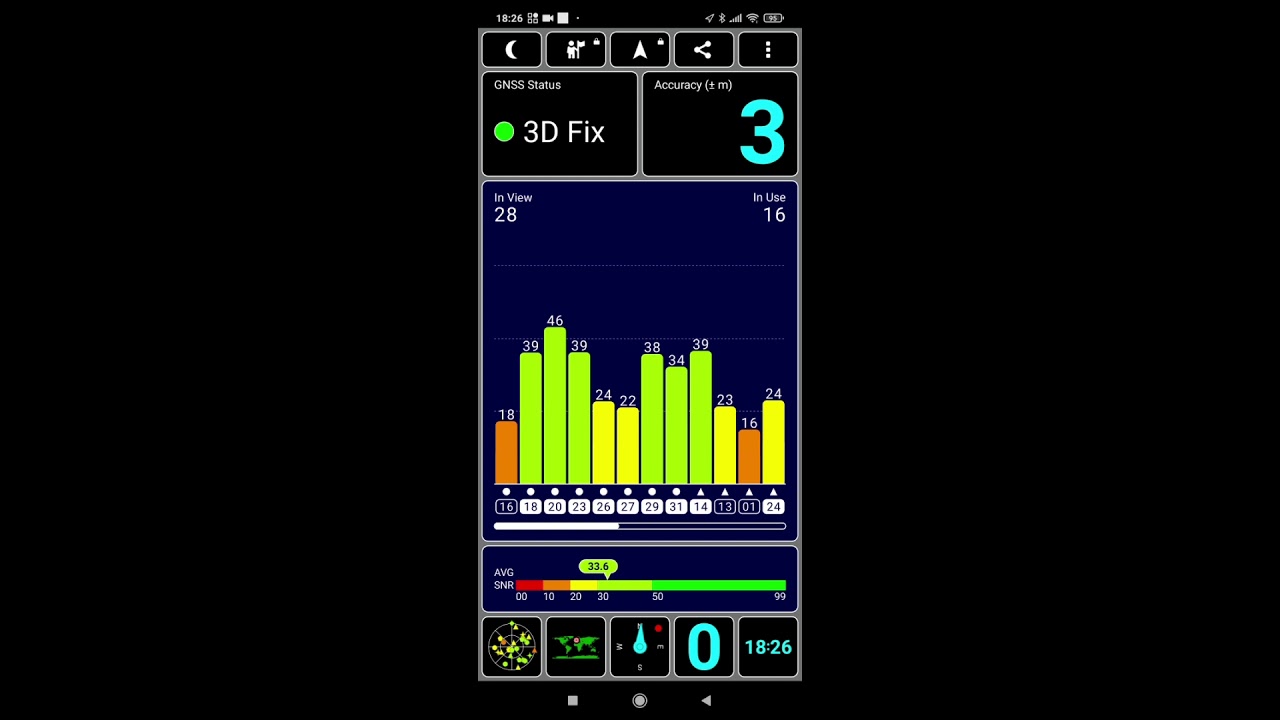Test Reviews
Xiaomi Redmi Note 10 Pro : test / review
Published on: 04-03-2021 / Modified: 01-10-2023
The launch of the new Redmi Note 10 range comes in three versions:
- Redmi Note 10 (basic version)
- Redmi Note 10 Pro (phone tested in this article)
- Redmi Note 10 Pro Max (phone for the Indian market)
The Redmi Note Pro range has always focused on performance and photos, this is again the case with this new Redmi Note 10 Pro and I find that Xiaomi has even gone the extra mile because this phone is equipped with one of the best photo sensors on the market with the Samsung S5KHM2 of 108 million pixels that we find in many phones more expensive like the Xiaomi Mi 11 or the Xiaomi Mi 10T Pro. The Redmi Note 10 Pro therefore offers the lowest price for this sensor.
The other pleasant surprise is the screen. In this price range we mainly find IPS LCD screens but the Redmi Note 10 Pro has a 120Hz Amoled screen. Here too, the revolution is the price because a screen of this type in this price range is very rare.
I still have to test this new Redmi Note 10 in depth to see if he keeps his promises.
Manufacturer web site:
https://www.mi.com
Site where I have bought the Xiaomi Redmi 10 Pro: https://bit.ly/3qcAAzm
Structure of my tests
I test the phones according to a pre-established structure (see below) to provide you with as much information as possible. Unfortunately, this takes a long time. Some tests like network performance tests take several days and for photo tests I sometimes have to wait until the weather is suitable to take pictures in good conditions. I am therefore obliged to publish the tests step by step, so I invite you to come back if the test is not complete at the time of your visit.Price Xiaomi Redmi 10 Pro
The list below shows the prices for the Xiaomi Redmi 10 Pro from more than 50 sites around the world. If you are not satisfied with any price, you can subscribe to a price alert to be the first to be notified when the price drops.The above links are affiliate links from companies such as Amazon, Gearbest, Aliexpress,... If you appreciate my work, I would be grateful if you could purchase these products through these links. It costs you absolutely nothing but I get a small commission that allows me to buy the material I test. Thank you very much!
Timeline
03/04/21 Launch of the Redmi Note 10 Pro, I was lucky to be able to get one from the launchWhy this phone?
Since I am on my own to do my tests, I have to make choices to test the phones that are going to become commercial successes. By applying my criteria (and in particular the price) I tested many Xiaomi / Redmi / Poco because they almost always offer a good performance / price ratio. I have rarely been disappointed even if some models have not kept their promises.The Redmi Pro range has always been a great success by offering good performance (even for playing) and good photo quality. This new Redmi Note 10 Pro comes with some other good surprises like in particular an Amoled 120Hz screen, a 5020 mAh battery, stereo sound, fast charging at 33w and a screen that takes up 85% of the front surface of the phone. The only thing it lacks is 5G but I doubt that this is an essential criterion for a majority of buyers.
Despite all these positive elements, I cannot say that the Redmi Note 10 Pro is innovative because it incorporates components from other Xiaomi models, the revolution is not technological, it is mainly commercial because I do not see other phones capable of competing with it.
Unpacking
For the first time, I made a video presentation of the telephone:

First configuration
The Xiaomi Redmi Note 10 Pro boot procedure follows the same sequence as the other phones under MIUI 12, I noticed a difference on a screen where Xiaomi asks what type of keyboard to use, there is a choice between the keyboard Google (Gboard) and a special keyboard for braille writing.Xiaomi is always trying to subtly sign up for its cloud. There is obviously nothing serious but if you do not want it, you will have to be careful because registration can be done in one click.
Finish
The camera on the back stands out quite a bit. strong of the phone and this is the case for each model using this Samsung 108 million pixel sensor, this sensor is imposing and it is not possible to fully integrate it into the phone. The phone limps a little when it is placed on its back. The format of this sensor is a little different from what I have seen so far, it comes in two stages with a part for the flash and a higher part for the photo sensors.
Specifications
The information below comes from the Device Info HW application. The application provides detailed technical information about the tested phone.The Redmi Note 10 Pro shares a number of things with the Poco X3, this is part of Xiaomi's great recycling job which produces a large number of models by re-using as many things as possible. The CPU is different but offers the same characteristics and the same level of performance. The GPU is 100% identical. Both phones use the same base for wifi, memory, and sound (although the Redmi's version is slightly different).
On the other hand, the radio network part is totally different and this is a good thing because the Poco X3 did not offer good network sensitivity whereas it is quite the opposite with the Redmi . Xiaomi has obviously learned from its mistakes at this level. For that alone, those who hesitated between the Poco and the Redmi should choose the Redmi.
CPU / GPU Performance
The Xiaomi Redmi Note 10 Pro is equipped with a Qualcomm Snapdragon 732G CPU which is also present in the Poco X3, this type of CPU delivers a good overall performance and although the Poco X3 is cheaper than the Redmi, the Redmi nevertheless offers quite a good performance / price ratio if I compare it to other brands.
For the graphics part, the Redmi Note 10 Pro is equipped with a Qualcomm Adreno 618 GPU, here too it This is the same configuration as the Poco X3 but other models of the brand also use it, I am thinking in particular of the Redmi Note 9s or the Mi Note 10 Lite. This GPU is a mid-range GPU that offers enough performance to play most games in good conditions.
The similarity to the Poco X3 does not end there, the Redmi Note 10 Pro also uses the same Wifi chipset, it also shares the same base for the audio chipset and I think the fingerprint sensor is the same as well.
Benchmark Antutu/3DMark
I got a score of 286,000 points with Antutu, it's a good score for a mid-range phone but the Redmi Note 10 Pro is not the only one to provide such performance in this price range. . The Poco X3 uses the same hardware for a lower price.With such a high score, you can play just about any game without too many concessions.
Gaming
To test the performance in game, I download the mobile PUBG game and evaluate the in-game experience, graphics level and depth of vision. This game is quite demanding and should help you evaluating the performance of a phone.

PUBG Mobile runs in HD with the highest level of detail, I didn't experience any fluidity issue and the phone doesn't heat up much. The Redmi Note 10 Pro will therefore be able to seduce an audience of gamers.
Network performance
The Redmi Note 10 Pro covers most 4G frequencies in Europe, so you should be able to use it anywhere. All it lacks is 5G but I guess Xiaomi will release a 5G version later to launch yet another new model.Signal 4G (before december 2020)
The ability to pick up the network correctly is an essential element for a phone but it is only very rarely measured. To measure a phone's ability to pick up the network, I perform a large number of measurements on the same cells to be able to compare phones under similar conditions. The signal is measured in dBm, a value of -90dBm indicates a worse signal than -70dBm. These measurements are therefore taken under real conditions and not in a laboratory, they are not scientific but give a good indication of performance.
Signal 4G (from December 2020)
I decided to change the methodology for measuring the network because I noticed that the configuration of the mobile network changes over time. This makes it more difficult to compare phones because the conditions are no longer exactly the same.
To overcome this problem, I set up a device that captures 24 hours a day about ten parameters from the mobile network (ex: cell id, rssi, rsrq, snr, frequency,...). I then place the phone next to the device for 24 to 48 hours taking the same measurements so that I can compare them.
Overview of the phones tested with this methodology
The range of Redmi at Xiaomi has never really shone by its ability to capture the 4G network, it is also the same for the Poco X3 which obtained a poor score in terms of network sensitivity. So I wasn't expecting much from this Redmi Note 10 Pro but I was positively surprised because it is the best Redmi that I have been able to test so far.
I made almost 900 measurements and comparing them with my measuring device and on average the difference between the Redmi and my device is 0.89 dBm, the difference is therefore almost negligible. I haven't tested many with my new test protocol yet but at the time of this writing the Redmi Note 10 Pro was the best device.
The measurements on the outside of the graph are the best and we see that my reference device comes out most often as the winner of this test. This is correct but the difference between the measurements in red and the measurements in blue does not exceed 2 dBm, so the differences are very small. It should also be noted that the Redmi sometimes drops to -95 dBm but this is entirely my fault as it took me two minutes to put the phone back in place after recharging it and during those two minutes the phone was in a area where the network is slightly weaker.
If the technical part of this kind of test does not interest you, you can skip this paragraph and be satisfied with the conclusion, the Redmi Note 10 Pro has good sensitivity to 4G network.
Download/Upload speed
To test the download speed, I have identified some 4G cells offering good performance where I test all my devices several times to see what download and upload speed they can achieve.
Wifi performance
To test a phone's ability to receive the network properly, I take measurements near my router and then remotely (and always at the same place). This gives me an average in dBm where a value of -90 dBm indicates poorer performance than a value at -30 dBm.Wifi signal
The Redmi Note 10 uses a wifi chipset identical to that of the Poco X3, so I expected to find similar performance. However, I got a better signal with the Redmi Note 10 Pro, this phone also ranks among the best in terms of wifi sensitivity.
Download/Upload speed
To test the speed in Wifi, I connect to my router in 2.4Ghz and 5Ghz (if available) and use the Ookla application to measure the speed.
GPS performance
To test the quality of the GPS signal I use the Offline Maps application and I make the same train trip in pedestrian mode. Why? In pedestrian mode, the GPS does not artificially correct the signal to stick to the road, it has no markings, so you can see the actual position. I then use an application to measure the accuracy of the signal.

Battery range
The Redmi Note 10 Pro has a good battery that will allow you to last 2 to 3 days with normal use. If I compare the performance of this battery with other phones I have tested, I see that it ranks average. The Redmi Note 10 Pro is not the most energy efficient phone. Why? Consumption is strongly impacted by the size and brightness of the screen. As the Redmi Note 10 Pro uses a very large screen with a high level of brightness, this phone is therefore penalized compared to other phones which have a smaller, less bright screen.Photo camera test
To test the quality of photos produced by a phone, I do a technical test (resolution, sharpness, chromatic aberration,...) in studio (identical conditions) to evaluate the technical part objectively. From the second half of 2020, I built my own laboratory to take completely objective technical measurements. I then take pictures in real conditions to see how the camera performs. I then evaluate these photos according to my criteria but I publish the photos so that you can evaluate the result according to your criteria.Hardware
- Samsung S5KHM2 (108 Mpx)
- Sony IMX355 (8 Mpx) ultra wide angle
- GalaxyCore GC02M1 (2 Mpx) portrait
- Omnivision OV5675 (5 Mpx) macro
The front sensor is a Sony IMX471 Exmor RS of 16 Mpx.
The strength of this Redmi Note 10 Pro is the use of the Samsung S5KHM2. This is not a new sensor because it appeared almost 2 years ago for the first time on a Xiaomi Mi Note 10 (with S5KHMX), it was then taken over by most of the brand's high-end models. This is the first time that Xiaomi has equipped a mid-range phone with this sensor. It is one of the best photo sensors at the moment, the mid-range will therefore be able to compete with the high-end for the quality of the photos. As I have tested this sensor several times already, I could see if the settings of this model are different.
Default app
The Redmi Note 10 Pro uses the same photo application as other Xiaomi phones running MIUI 12. This application has improved a lot, the interface is clearer than before and it is possible to customize the menus. However, there is still this same defect, the settings and the zoom are displayed superimposed on the screen, so they are unreadable in strong light.
I also noticed a little latency in taking pictures in 108 Mpx, these pictures are so heavy that it takes a little processing time. The latency doesn't take more than a second but it shows if I compare the reaction time with a normal photo.
Photo quality
Photo test / studio
When I switch to PRO (manual) mode, I can work around this problem by increasing the exposure and changing the depth of fields. The result is much better. I'll try to test Gcam or another photo app to see if it's the same.
I also tested the wide angle sensor (probably a Sony sensor) follows the same trend with an even more marked underexposure but it is not surprising, it is the same problem with all the wide angle sensors.
In the photo gallery below I tested the main sensor and the wide-angle sensor, photos without text are photos taken in manual mode.
Photo test / sunny
I took the following photos in the late afternoon at the beginning of March, so the light was orange. The Redmi Note 10 Pro has done very well to restore the warm coloring of this late afternoon with a good balance between the very dark areas and the lighter areas. The sky does not fall overexposed and the dark areas are not completely black. The level of detail is very impressive because even when zooming in, the detail of the tree branches is still clearly visible. There are currently not many cameras on the market that are able to compete with this Samsung sensor and in this price range there are none. In March 2021, therefore, I can say that the Redmi Note 10 Pro has the best camera for the price range between 200 and 250 €.
I tested the photo modes, 108 Mpx, HDR and AI on the following photos, this sometimes explains the differences in colour. When the light is good, I find that the phone does very well without assistance, so it is better to disable AI and HDR as the colours are sometimes not realistic.
Photo test / cloudy
Not yet available / tested
Test photo / night
Not yet available / tested
Video quality
Stabilisation

Video normale conditions
Not yet available / tested
Video low light
Not yet available / tested
Audio quality
To test the quality of the phone's audio output, I connect the device's audio output to a measuring tool, then play sounds on all frequencies and measure the differences between the original sound and the sound produced by the phone. In this way I measure the phone's ability to correctly reproduce all sounds.Frequency Response
This test is intended to test the device's ability to correctly reproduce all frequencies. The white line in the middle of the graph is the ideal situation and the other colors come from tests on different phones. A deviation from the reference line indicates a deviation from the ideal situation. To see good sound at all frequencies, it is therefore necessary to get as close as possible to the reference line.
Dynamic Range
This test is designed to test a phone's ability to play sounds at different volume levels. Here too, the phones must be as close as possible to the reference.
Noise Level
This test aims to identify if the device under test is able to reproduce sounds without too much noise. A high score indicates a low parasite rate, a lower score indicates a higher presence of parasites.
Screen quality
To test the screen, I use a colorimetric probe that measures the color accuracy of a screen, as well as other parameters to see if a screen is able to correctly reproduce an image. I also test the brightness level to determine if the screen will be able to display an image in full sunlight.Colorimetry
By combining all the colors and with the setting in standard mode, I get a dE of 1.31, that's an excellent score, the Redmi Note 10 Pro offers excellent color reproduction.
Brightness / Contrast
The Redmi Note 10 Pro offers two modes for brightness, a normal mode and a "sun" mode. I measured a brightness of almost 400 cd / m² in normal mode, it is a good score without being extraordinary. On the other hand with the sun mode, I measured a brightness of 617 cd / m². It's a great score, it's one of the brightest screens I've tested so far.
The Redmi Note 10 Pro uses a super Amoled screen which gives it almost infinite contrast, so black is really black, which is one of the huge advantages of this type of screen.
This Amoled screen is clearly one of the strengths of this Redmi Note 10 Pro because the colors are correct and the contrast is excellent. In this price range, I haven't seen better yet.
Biometry
Not yet available / testedOperating system
Not yet available / tested
Encoutered bugs
Not yet available / testedAccessories Xiaomi Redmi 10 Pro
Compare Xiaomi Redmi 10 Pro with the others
Test / Review conclusion
Not yet available / tested
Strengths
Not yet available / tested
Weaknesses
Color temperature slightly too warm in 108 Mpx
Slight latency for photos in 108 Mpx
Alternatives to this product
Xiaomi has once again managed to launch a phone that literally crushes the competition. In this price zone there is not really an equivalent phone from Samsung or other brands. As I often write, Xiaomi's biggest competitor is Xiaomi. The closest alternative to this phone is undoubtedly the Poco x3 or maybe also the Mi 10 Lite but as a whole the Redmi Note 10 Pro exceeds them on several criteria.







































Questions/Comments